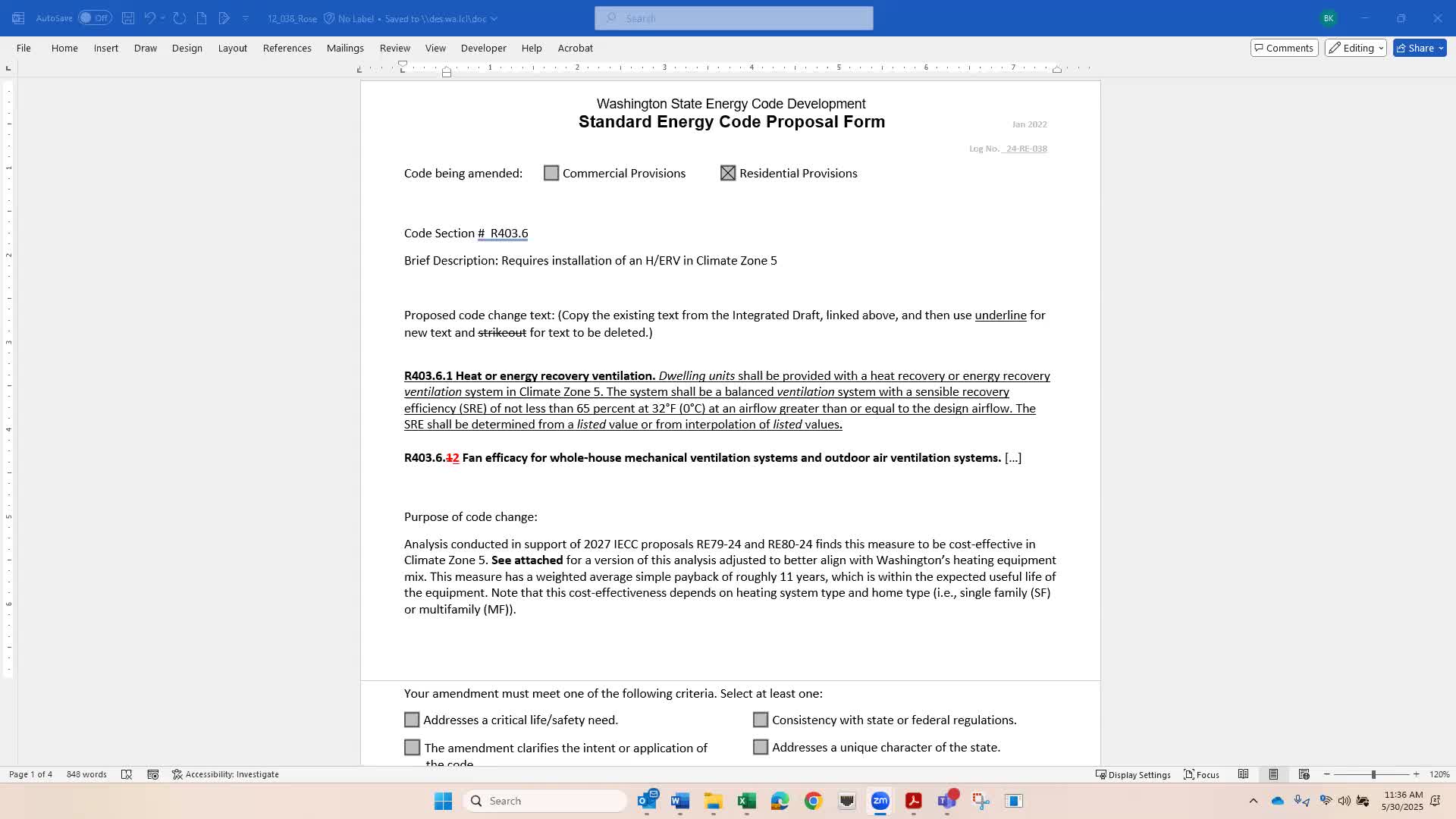Washington State reviews electric readiness proposal for updated energy code
June 01, 2025 | Building Code Council, Governor's Office - Boards & Commissions, Executive, Washington
Thanks to Scribe from Workplace AI , all articles about Washington are free for you to enjoy throughout 2025!

This article was created by AI using a video recording of the meeting. It summarizes the key points discussed, but for full details and context, please refer to the video of the full meeting. Link to Full Meeting
One key point raised was the necessity of heat recovery systems or the introduction of fresh air to maintain a balanced environment. A council member emphasized the financial implications of bringing in cold, moist air without proper heat recovery, questioning the cost-effectiveness of such practices. The discussion underscored the delicate balance between energy savings and maintaining indoor air quality, particularly in commercial settings.
The conversation then shifted to residential buildings, where it was clarified that balanced ventilation systems are indeed applicable, contrary to some assumptions. This revelation sparked further dialogue about the specific needs of smaller homes, with suggestions for tailored solutions to ensure adequate fresh air distribution in bedrooms.
As the meeting progressed, a proposal was introduced to adopt an appendix from the International Energy Conservation Code (IECC) focused on electric readiness. This proposal aims to enhance the state's energy code by including measures for space heaters that had previously been omitted during negotiations. The council members expressed support for this initiative, recognizing its potential to improve energy efficiency across various building types.
The meeting concluded with a commitment to further explore these proposals, with all discussions recorded and made available on the SBCC website for public access. As the council moves forward, the implications of these discussions could shape the future of building standards in Washington, emphasizing the importance of energy efficiency and healthy living environments.
Converted from SBCC WSEC-R TAG Meeting - May 30, 2025 meeting on June 01, 2025
Link to Full Meeting
Comments
View full meeting
This article is based on a recent meeting—watch the full video and explore the complete transcript for deeper insights into the discussion.
View full meeting


